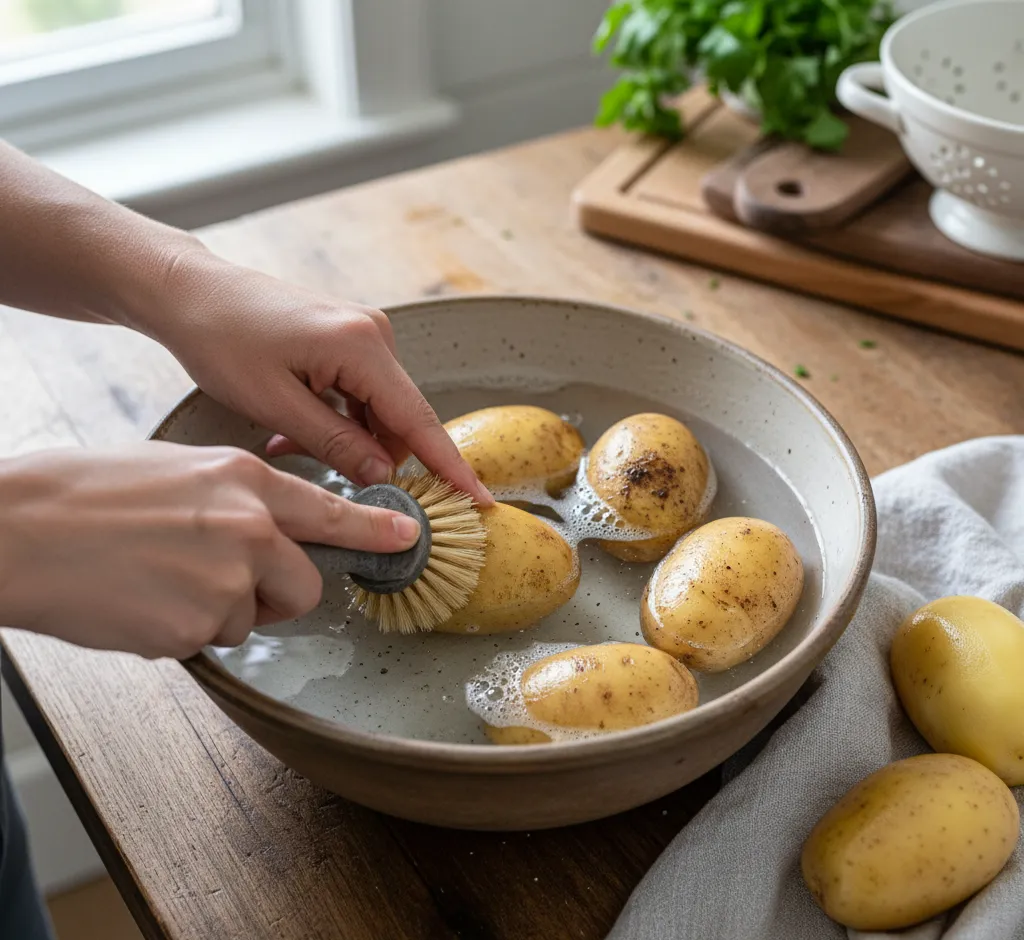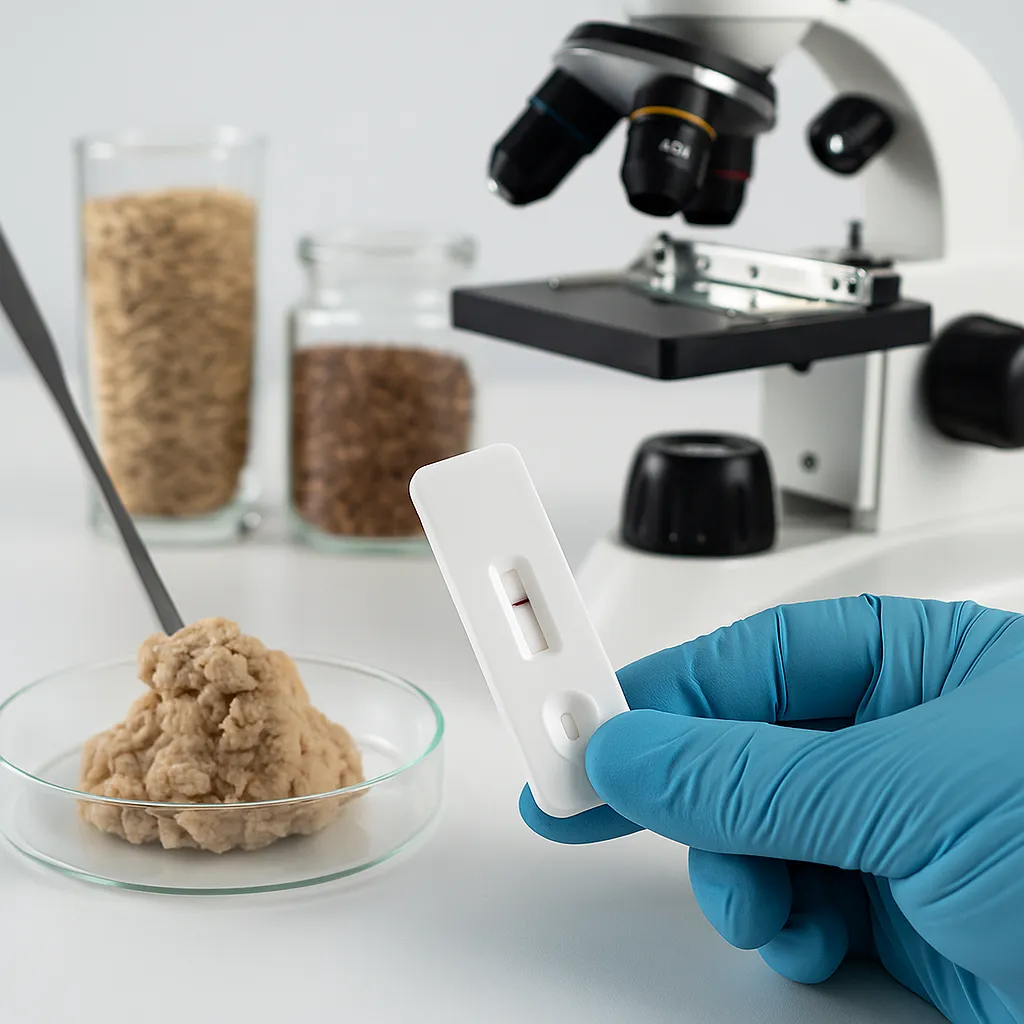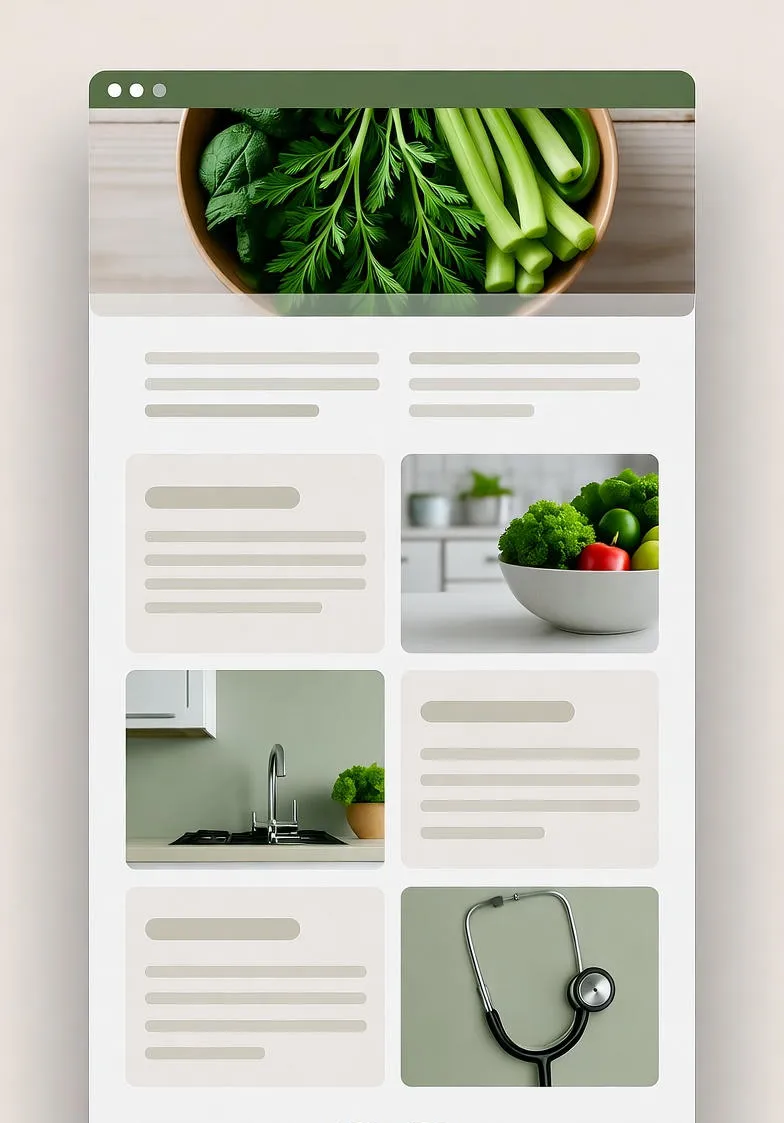Why and How to Wash Potatoes *Before* Peeling: The Essential Guide to Food Safety
Learn the essential, step-by-step method for washing potatoes *before* peeling to prevent cross-contamination from soil, bacteria, and pesticides. A crucial guide for kitchen hygiene.

🥔 The Importance of Washing Potatoes Before You Peel
It might seem counterintuitive to spend time scrubbing a potato skin you’re just going to throw away. However, washing potatoes before you peel them is not just a suggestion—it is an essential step in maintaining proper kitchen hygiene and ensuring food safety. By understanding the risk of cross-contamination, you can master a simple, effective washing routine that elevates your meal prep.
🔬 The Science of Scrubbing: Why Pre-Peeling Wash is Critical
Potatoes are root vegetables, meaning they are grown directly in the soil. This soil contains not only visible dirt and grit but also microscopic bacteria and residual pesticides. The primary reason for washing before peeling is to prevent the transfer of these contaminants:
- Preventing Cross-Contamination: When you run a dirty potato through a peeler or cut it with a knife, the blade passes directly through the contaminated skin and into the clean, edible flesh. This action drags dirt, bacteria (like E. coli or Salmonella, which can be present in soil), and chemicals deep into the potato.
- Protecting Your Tools: Keeping the skin clean prevents grit and tiny stones from dulling your expensive vegetable peeler or kitchen knife.
- Washing Off Pesticide Residue: While peeling removes most residues, a thorough wash helps eliminate surface-level chemicals before the peeling process can push any remaining traces inward.
The Golden Rule: Always wash produce with firm skin, like potatoes, carrots, and sweet potatoes, *before* cutting, peeling, or cooking.
💦 Step-by-Step Method: The Perfect Pre-Peel Wash
A successful potato wash is quick, requires no special chemicals, and only needs a few simple tools. Follow this process for spotless spuds:
1. Preparation: Gather Tools and Initiate the Soak
Start with a clean sink and clean hands. The best way to tackle stubborn, caked-on dirt is to soften it first.
- Soak: Place your potatoes in a large bowl or a clean sink basin and cover them completely with **cool tap water**.
- Wait: Let them soak for 5 to 10 minutes. This time allows the water to penetrate and loosen the soil, making the scrubbing much easier.
2. The Scrub: Remove the Contaminants
Scrubbing is the most important part of the process, as it physically dislodges dirt that rinsing alone cannot remove.
- Tool Selection: Use a **dedicated vegetable brush** with firm, short bristles. Avoid using the same sponge or brush you use for dishes, as it may contain soap residue or old food particles.
- Technique: Remove one potato from the soak water at a time. Hold it under **cool running water** and scrub the entire surface using a gentle, circular motion. Pay extra attention to the ‘eyes’ or any indentations where dirt tends to hide.
- For Delicate Skins: For new potatoes, baby potatoes, or fingerlings with thin, waxy skin, a brush can cause bruising. Instead, use a clean kitchen towel or your hands to gently rub the skin while rinsing.
3. Final Inspection and Finishing Touches
The final steps ensure a truly clean surface for peeling.
- Rinse and Dry: Give the scrubbed potato a final, quick rinse under clean water. If you are not peeling immediately, pat the potatoes completely dry with a paper towel or clean cloth. Moisture encourages bacteria growth and can lead to premature spoilage.
- Address Blemishes: Use a small paring knife or the point of your peeler to remove any remaining sprouts, green spots (which contain the mild toxin solanine), or heavily bruised areas.
🚫 What NOT to Use When Washing Potatoes
Stick to cool, clean water. Do not try to enhance the cleaning process with chemicals, as they can absorb into the potato.
- ❌ Dish Soap or Detergent: Soaps are not designed for consumption and can leave a harmful residue that you might inadvertently eat.
- ❌ Bleach or Disinfectants: These are toxic and should never be used on food.
- ❌ Commercial Produce Washes: While marketed for cleaning, studies have shown that scrubbing with a brush under running water is just as effective and much more cost-efficient.
By adopting this simple, science-backed approach to washing, you ensure that every potato you peel starts with a clean slate, protecting the health and safety of every dish you prepare.


